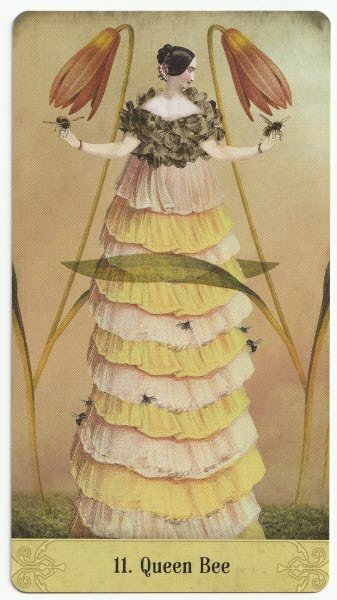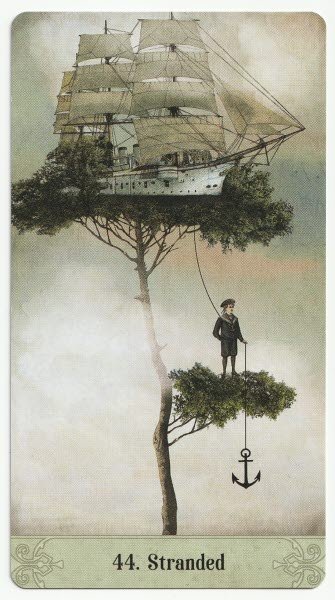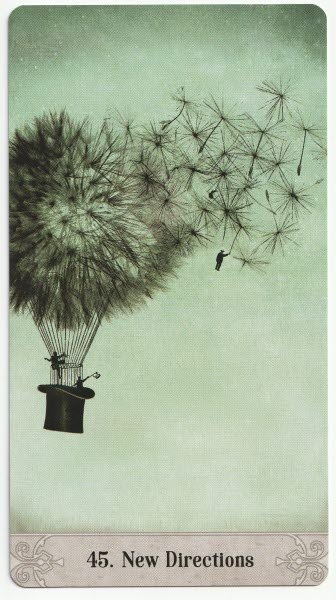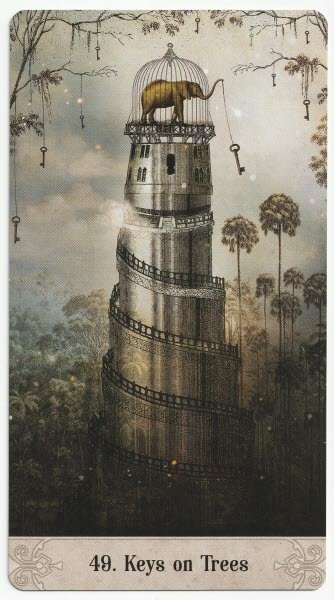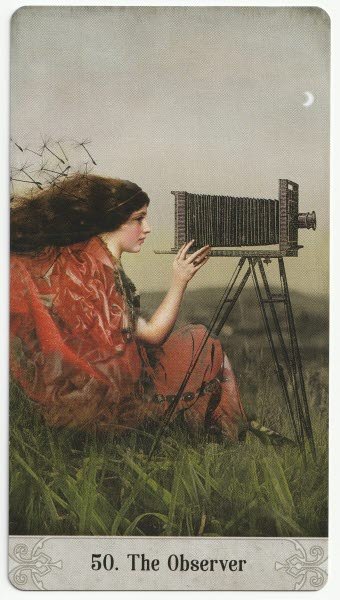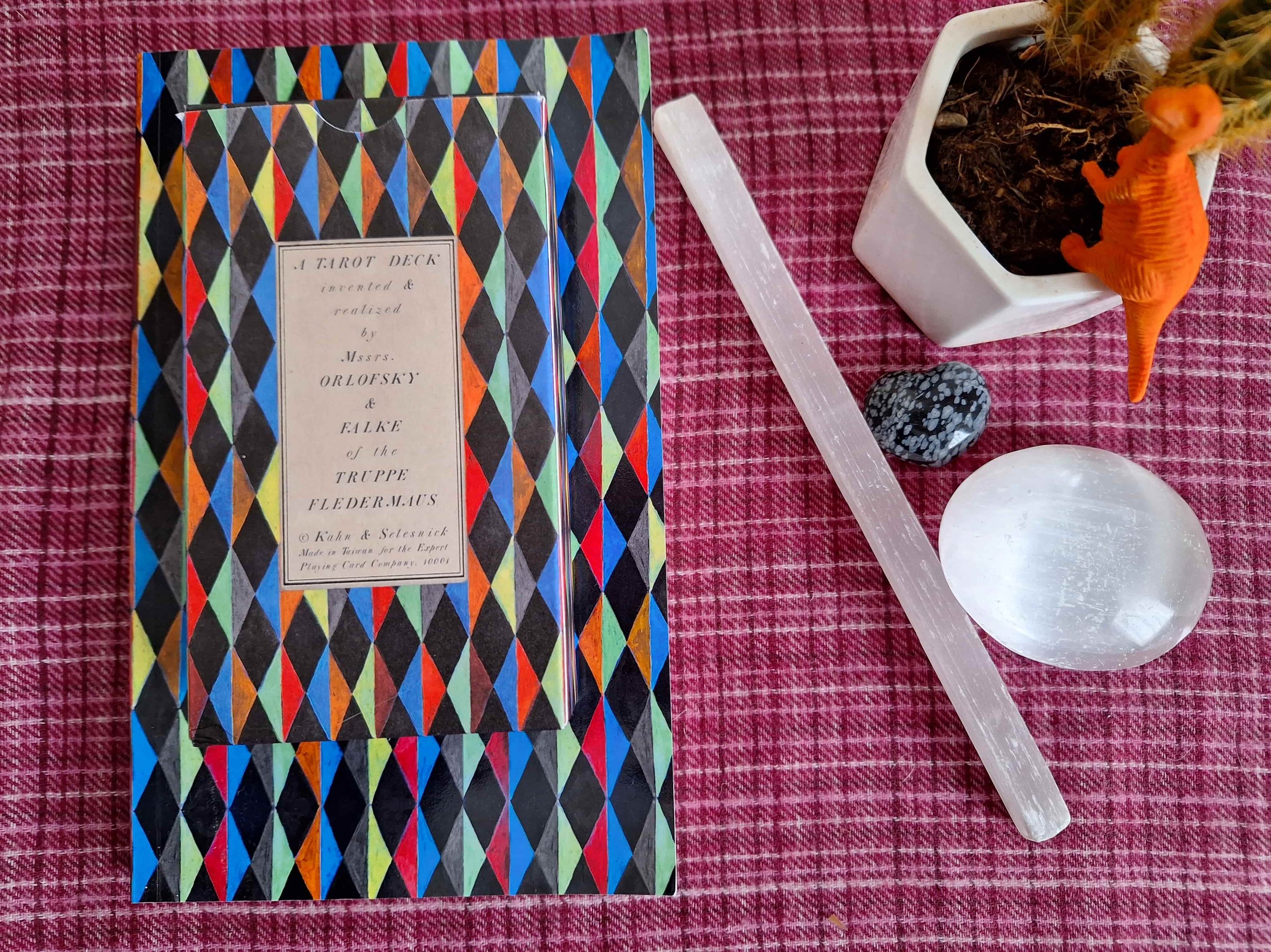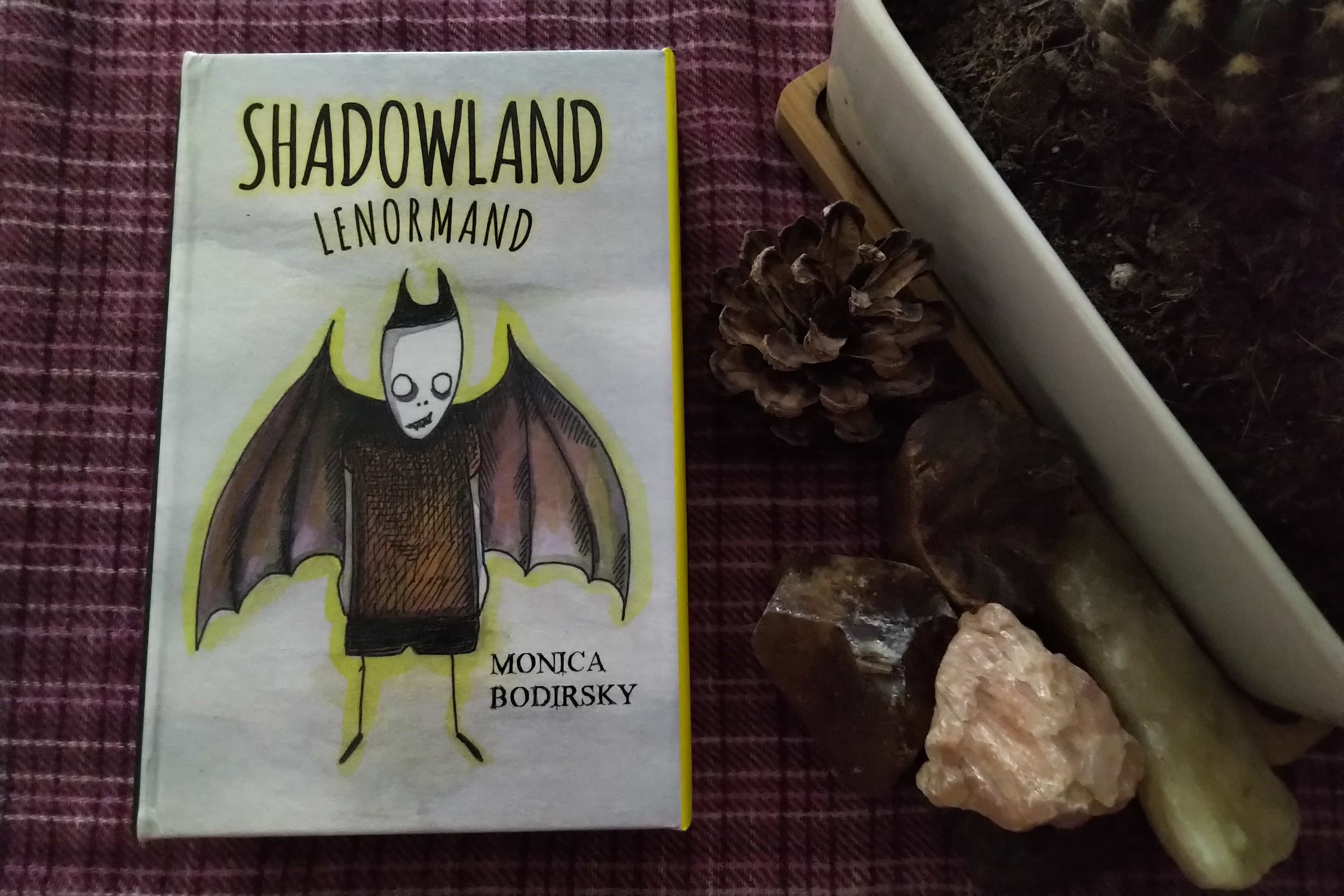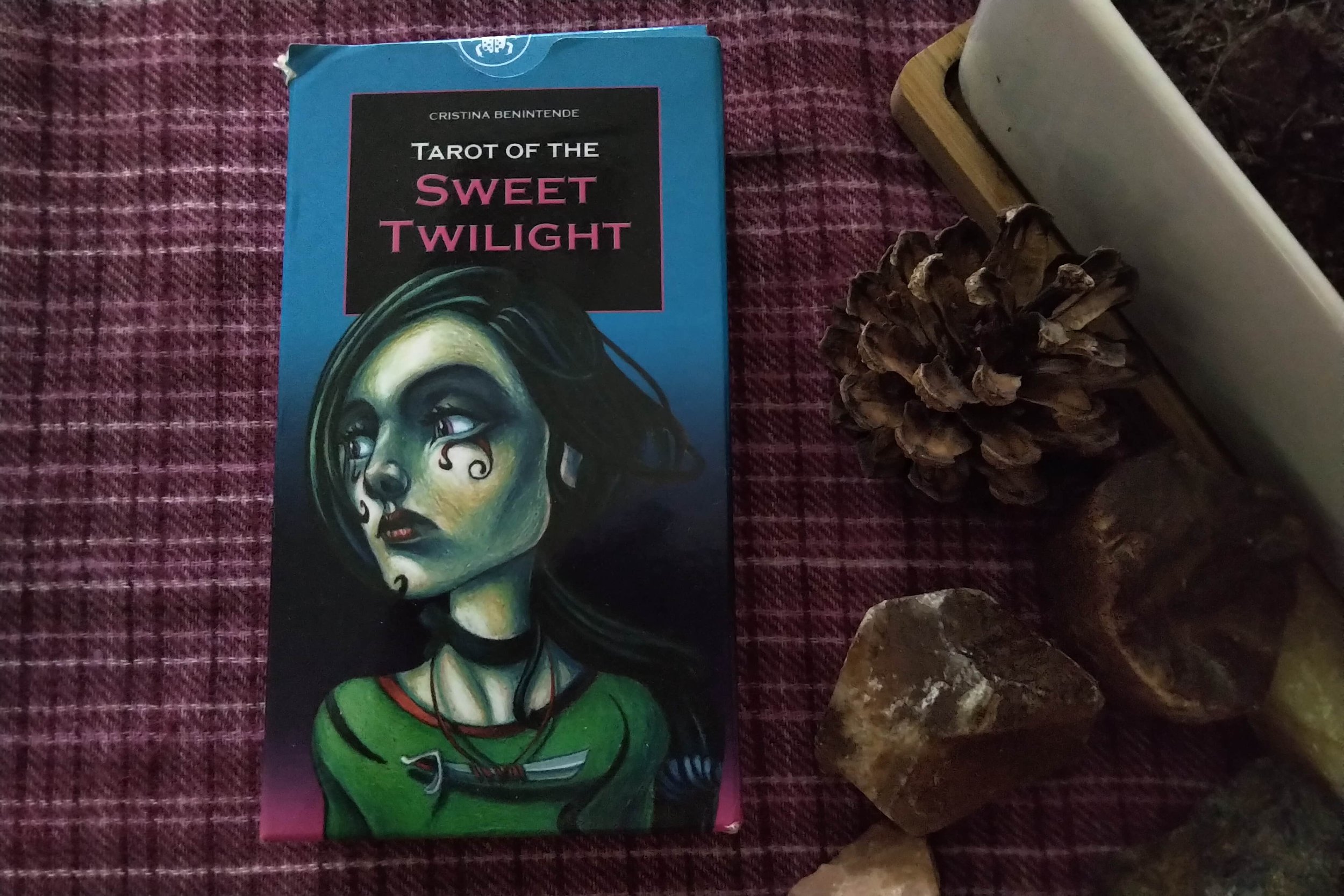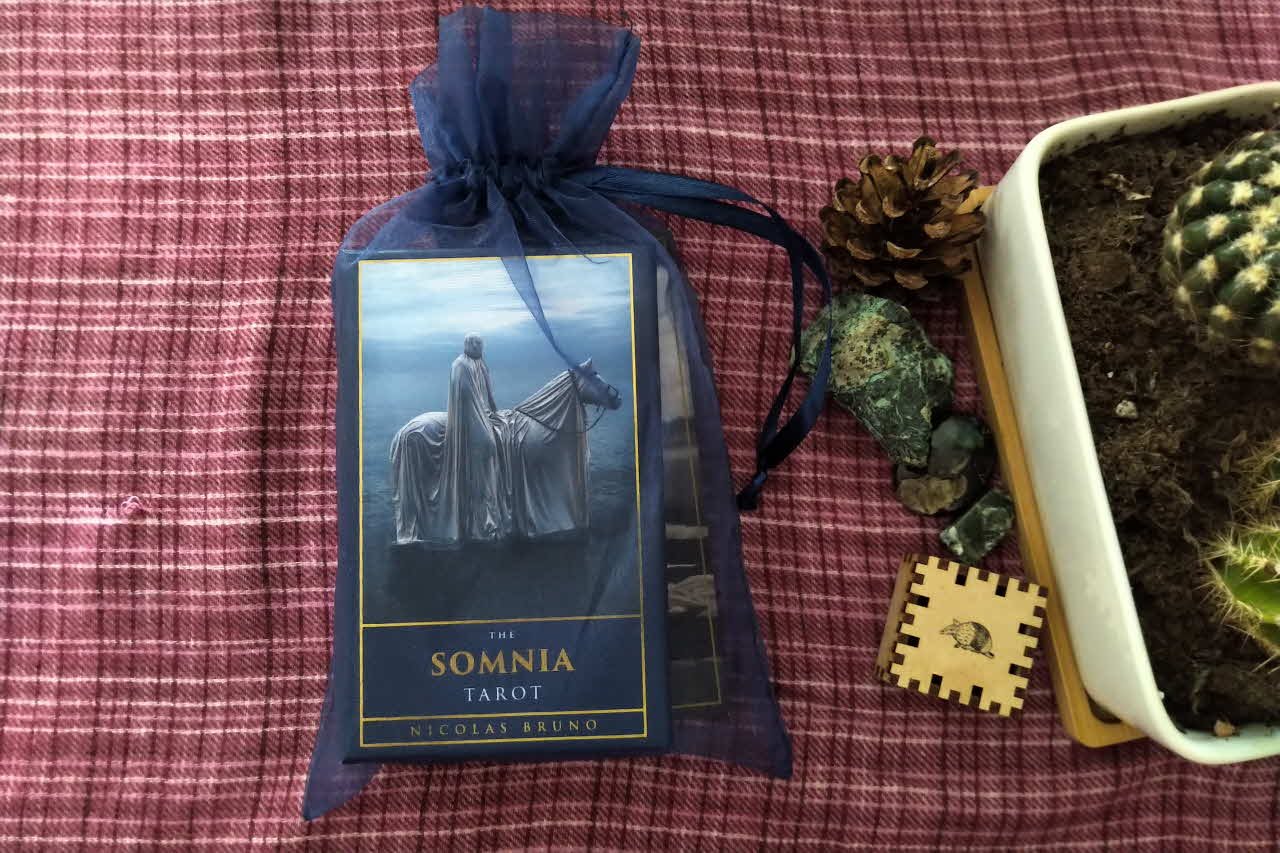The Oracle of Mystical Moments


My old regular deck isn’t working for me anymore, so I’m now on the hunt for a new one. The Oracle of Mystical Moments by Catrin Welz-Stein caught my eye, and I'm glad I now own it because I adore the imagery. I came across her work years before the existence of the oracle; she’s a well-established artist whose work I love for being so whimsical and surreal. Despite her occasional use of a bold colour or two, the palette is generally soft on the eye, yet her images speak volumes and manage to cut through any superficial thoughts and head straight for the soul. Catrin’s images often hold a bucket-load of hidden symbolism thanks to her liberal use of objects that can be translated in various ways. This 52-card oracle was first published in 2017, which makes me late to the game, but I’ll make sure I’m quicker off the mark when she releases her tarot deck in the summer. The Oracle of Mystical Moments is an excellent deck for self-development thanks to its dream-like qualities. The cards come in a small sturdy box with a lift-off lid. While the booklet is slim, each card has a half a page of text which includes a couple of keywords and a useful description of the image. The cards say so much more than what is written in the booklet, and I thought it would be nice to look at a couple of them a little closer. I already have a feeling this will be a deck that I’ll want to use when I’m in the frame of mind for some heavy analysis.
Card 28. Can You Hear Me has the keywords of Loneliness, Cry for help, Communication. The booklet says: “A woman floats in a seashell on the big sea. She looks to the horizon, as if she is waiting for somebody. She is holding a trumpet in her hand, ready to blow it when the time comes. The ocean symbolizes her feelings. vast and seemingly unknowable, it surrounds her in an endless arc. She looks lonely and deserted. But she has a way of connecting, a tool for turning passive silence into supportive communication.”
Water is often used as a symbolic reference for emotions. The general idea is that we interpret the emotional state by analysing the water itself. I can see only a few small ripples on the water — it’s certainly not looking tempestuous, and there’s no tidal wave looming nor nasty monsters lurking under the surface. I see a fish, but it appears innocuous. We can see relatively well under the water, indicating a pretty clean emotional state. It’s not crystal clear, but we’re not looking at a swamp here. The suggestion is there is some clarity in connection with emotional matters. The woman's stance suggests some degree of apathy, or maybe she’s just sick of waiting or feeling fed up. Is she waiting for someone else, or is she waiting for herself? The shell on the bottom half of her body is quite curious — does she need to come out of her shell, or does it serve to protect her from the waist down? Despite being immersed in such a huge body of water, she has little skin contact with it — could there be a need to reconnect fully with emotion? Her fingers on the trumpet look to be just about touching the water's surface, and she clearly knows it surrounds her. Can you hear me? may speak of the soul’s call to the conscious self as much as it shows a need to connect with others. Whatever she’s doing, it’s clear she is safe at this moment in time.
Card 44. Stranded is a familiar image to me. Many years ago, I dreamt of a galleon ship sailing through the sky, although I don’t remember much about what happened. The booklet gives the keywords of Misdirection, Misjudgement, and Fear of failure. The booklet description says, “Look at this young sailor stranded with his ship on top of a tall tree. He needs his anchor to help him get back down to earth. The card asks: How did the ship get there? This is such an unusual place for a seafaring vessel! At times we find ourselves in situations we can’t quite understand. Sometimes we feel we’ve made mistakes because our expectations are so high, we set ourselves up for failure. We either beat ourselves up over our performance, or we are so intimidated that we never even begin. Failure is a necessary part of success, as important to the journey as a rudder on a ship.” One of the first things that struck me about this image is that the ship is caught in a tree. Trees have roots that dig deep into the earth. What does the ship symbolise? Could it be a representative of an idea or a project? The theme here suggests a blend of earth (tree) air (the sky) but also water (ship). It’s true enough we need to be grounded and practical to turn ideas into something physical, but what’s with this ship? I remember the astrologer Liz Greene comparing an aspect of self to a ship - the part of us that needs to be sturdy if we’re swimming around in the deeper parts of our psyche. In other words, we need to be stable in the outer world if we’re exploring our hidden emotions. The sailor stands with his feet on a tree branch; this tells me he has at least the capacity to ground himself further. The 'sea can also be a euphemism for the collective unconscious - the hidden realms we have access to when we’re trying to create a work of art or meditating. It’s the place of oneness we can all call home. The failure this card indicates is not insurmountable - we simply need to re-ground and carry on with our journey when we find a clear path ahead. We can also read the card in another way - maybe we’ve been too caught up in the physical details and need to let our imagination soar even higher.
I love the cards — I know I’ll want to use this regularly, but I still need a new tarot deck.










